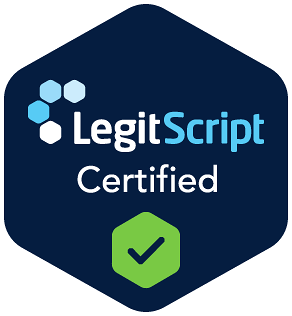By Ben Yudkoff, MD MA, with Trishan Panch, MD, MPH — Lumin Health
Most people who come to ketamine therapy aren’t starting from zero. They arrive having tried SSRIs or SNRIs, bupropion for energy, or on sedating nighttime antidepressants because sleep has become elusive. The practical question we hear — Will these medications clash with ketamine? — deserves a clear, clinic-grounded answer.
Where drug “interactions” really matter (and where they don’t)
Two medicines can interact in several places: in the gut (absorption), in the liver (metabolism), on blood proteins (transport), and — most relevant for ketamine and mood meds — in the brain (end-targets). For the usual oral antidepressants and the low, supervised doses of ketamine used for psychiatric care, the first three categories are rarely a problem; the meaningful interplay is neural, not digestive or hepatic. Broadly, the combination of antidepressant medications and ketamine is safe in routine clinical practice when monitored by a clinician who knows how to screen, dose, and watch.
At Lumin Health, that is the point of our intake: every patient is evaluated by a psychiatrist or psychiatric nurse practitioner/physician assistant who lives in both worlds — mental health and medicine. This is where small, thoughtful adjustments (dose timing, blood-pressure checks, the order of medications on treatment days) smooth the course of care. The goal isn’t to find reasons to say no but to help you proceed safely and effectively.
Antidepressant families, in plain English
Most antidepressants aim at the monoamine class of neurotransmitters — serotonin, norepinephrine, and dopamine. Ketamine, by contrast, exerts its antidepressant effect primarily through the glutamate system. It does this by temporarily blocking brain cells from slowing down the release of glutamate – this surge of glutamate targets different receptors on adjacent cells, especially AMPA receptors and NMDA receptors that, themselves, are not impacted by ketamine. Mechanistically, these impacts are largely distinct from how classic antidepressant medications work, which is one reason they “play well” together: they each target different systemsThat said, different antidepressant families bring different real‑world considerations:
- SNRIs (e.g., venlafaxine, duloxetine, levomilnacipran) and NDRIs (e.g., bupropion): these can nudge blood pressure and heart rate upward in some people. Ketamine can do the same, transiently. Together, we watch vital signs like heart rate and blood pressure a bit more closely, but issues are usually minor and manageable in a supervised clinic setting.
- Sedating agents (e.g., mirtazapine, trazodone): useful for sleep, but add them to ketamine’s own sedating drift and some patients feel extra groggy during or after sessions. We plan for that (a longer observation, ride home, earlier bedtime) and calibrate.
The headline: with thoughtful screening and monitoring, ketamine plus antidepressants is generally safe. Always tell your ketamine team everything you take — including “as‑needed” meds and supplements — so we can anticipate and plan.
“Will my antidepressant blunt the ketamine experience?”
With serotonergic psychedelics such as psilocybin or MDMA, SSRIs and SNRIs can sometimes dampen the acute experience. Ketamine is different. Because it works primarily via glutamate pathways, routine antidepressants don’t mute ketamine’s perceptual or therapeutic effects. Some sedating antidepressants might soften the physiologic arousal (like elevated pulse) that can signal the excitement that some people feel when in the ketamine experience, but in practice patients still engage the experience and the therapeutic work just fine.
What changed in 2025 — and why your insurer may ask new questions
In January 2025, the FDA approved esketamine (Spravato®) as monotherapy for adults with treatment‑resistant depression (TRD) — no longer requiring a concomitant oral antidepressant for the TRD indication. Janssen (the manufacturer) announced the change on January 21, 2025, and the updated label followed shortly thereafter.
What does that mean for coverage? Many payers are revising policies to align with the label. For example, Mass General Brigham Health Plan’s policy now explicitly lists TRD treatment “as monotherapy or in conjunction with an oral antidepressant.” Always check your plan’s current criteria and be prepared for prior authorization - the process of asking whether the insurance company will cover the cost of treatment – don’t worry, our team does this with you.
Two important nuances:
- TRD still means TRD. “Monotherapy” doesn’t mean “first‑line.” The FDA’s monotherapy approval for TRD assumes inadequate response to at least 2-4 oral antidepressants — a definition many payers keep in their criteria. Expect to document those trials.
- The suicidality indication is different. For MDD with acute suicidal ideation or behavior, the label still pairs esketamine with an oral antidepressant. Many payer policies reflect that distinction. If the clinical picture is acute suicidality, you may not need to have tried multiple past antidepressant failures, but coverage commonly requires combination with an oral antidepressant - that said, insurance policies in this area have been flexible to meet the needs of their clients and, even if you are not taking an antidepressant medication, special consideration can be provided, case by case.
Policies move. Labels update. Our advice: treat coverage as a living document and use a clinic team that handles prior authorizations every week.
Practical safety: what Lumin Health watches for in combination with ketamine therapy
- Blood pressure and heart rate: transient upticks are expected with ketamine; SNRIs/NDRIs can add a small increment. We screen for hypertension, check vitals before/during/after dosing, and adjust cautiously. (These cardiovascular effects are reflected in the FDA label and in real‑world clinic protocols.)
- Sedation, disorientation, and grogginess: typically short‑lived; higher if you already take sedating antidepressants. We help you plan the session day accordingly.
- Medication timing: we rarely stop a stable antidepressant for ketamine. We may suggest tweaks when you take it (for example, moving a nighttime sedative earlier on session days) to optimize comfort and observation.
If you’ve never tried an antidepressant and still want to try ketamine treatment
Could you still be a candidate for esketamine? Possibly — it depends on the indication. For TRD, insurers and the FDA framework generally expect inadequate response to 2-4 oral antidepressant trials; monotherapy doesn’t erase that history requirement. For acute suicidal ideation, many plans emphasize the immediacy of risk and set different prerequisites — but still may require combining esketamine with an oral antidepressant during the acute protocol – again, this is flexible. We walk you through what applies to you and handle the paperwork.
Why a clinician‑led program matters
The art here lies less in pharmacology trivia and more in integrating details: your complete medication list, your blood‑pressure history and general medical history, your goals, your tolerance for sedation, and the realities of your insurance. An MD/NP‑supervised model isn’t gatekeeping; it’s how we keep the treatment both safe and usable. Small adjustments — dose, timing, observation time — make a large difference in comfort and continuity.
What to tell your ketamine team (a short checklist)
- Every medication you take (prescription, over‑the‑counter, supplements), plus when you take them.
- Your medical history and any cardiovascular diagnoses.
- What you’ve already tried for depression, how long, and what happened — good and bad.
- Your goals for treatment and how you want to arrange a support network (therapy sessions, behavioral targets, work or family priorities).
The take‑home for trying ketamine clinics while on antidepressants
In everyday psychiatry, ketamine and antidepressants usually belong in the same sentence. Their mechanisms are distinct enough to complement each other, their safety together is strong under supervision, and the regulatory landscape now gives clinicians more options — especially after the FDA’s 2025 update allowing TRD monotherapy. Your team’s job is to fold all of this — your meds, your medical history, your insurance — into a plan that gets you the benefit with minimal friction. Your job is to show up, tell us the truth about what you’re taking and feeling, and use the days after treatment to practice the small actions that make improvement stick.
Please note: The information above is accurate at the time of writing but coverage criteria change. Indications differ between treatment‑resistant depression and MDD with acute suicidal ideation/behavior. At Lumin Health, we verify the current FDA label and your plan’s latest medical policy before starting to make sure that any treatment is appropriate to your unique circumstances.
Heading 1
Heading 2
Heading 3
Heading 4
Heading 5
Heading 6
Lorem ipsum dolor sit amet, consectetur adipiscing elit, sed do eiusmod tempor incididunt ut labore et dolore magna aliqua. Ut enim ad minim veniam, quis nostrud exercitation ullamco laboris nisi ut aliquip ex ea commodo consequat. Duis aute irure dolor in reprehenderit in voluptate velit esse cillum dolore eu fugiat nulla pariatur.
Block quote
Ordered list
- Item 1
- Item 2
- Item 3
Unordered list
- Item A
- Item B
- Item C
Bold text
Emphasis
Superscript
Subscript







